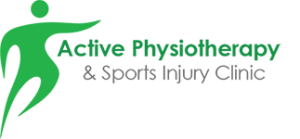Exercise Therapy
 Muscle Balancing Techniques
Muscle Balancing Techniques
Certain muscles have a tendency to tighten such as hamstrings, adductors, piriformis, psoas, calf, lower back extensors, upper fibers of trapezius, pectoralis major/minor and sub-occipital muscles. Other muscles have a tendency to weaken such as gluteus medius, maximus, quadriceps, tibials anterior, abdominals, middle and lower fibers of trapezius and deep neck flexor muscles.
This technique involves evaluating each patient for muscle imbalances and designing a specific program for them. The patient is taught to stretch the tight muscles first and then strengthen the weak muscles. These exercises are combined with mobility and cardiovascular exercises to complete the program.
Mobility Exercises
Range of motion (ROM) is the term that is used to describe the amount of movement you have at each joint. If you have a limitation in ROM at a joint this could be do to tightness in the joint capsule. Mobility exercises are specifically designed to stretch the joint capsule. There are different mobility exercises for the different joints of the body. You will be instructed on which mobility exercises are good for you and how many repetitions to perform.
Flexibility Exercises
Range of motion (ROM) is the term that is used to describe the amount of movement you have at each joint. If you have a limitation in ROM at a joint this could be due to tightness in the muscles that surround the joint. Flexibility Exercises are specifically designed to stretch the muscles around the joint.
Stretching is useful for both injury prevention and injury treatment. Do not stretch to the point of pain and do not bounce since this may cause injury to the muscle. There are different flexibility exercises for the different muscles of the body. You will be instruct on which flexibility exercises are good for you and how many to perform.
Strengthening Exercises
Muscles help you move, and also support all the bones and joints in your body. Many aches and pains can be prevented or treated by having strong muscles. If your muscles are strong, they can protect your joints and keep your posture aligned properly. Proper posture will limit any abnormal strain on your joints, ligaments, muscles, tendons and bones.
If you have had an injury to your bones, muscles, or structures in and around your joints, a physical therapist can help teach you what strengthening exercises are helpful and what exercises are harmful. They can monitor your exercises when you first start and then make sure that other problems do not develop. A physiotherapist can also teach you how much weight to lift, the number of repetitions, sets and when to progress or change your exercises.
Lumbar Stabilisation Exercises
Lumbar Stabilzation is an active form of exercise used in physical therapy. Research indicates an association between chronic low back pain and muscle weakness and tightness. The trunk and pelvic muscles are most affected. Lumbar Stabilization training can improve the strength, endurance, balance and control of these muscles to support the spine and help prevent lower back pain.
The patient first learns how to find the “neutral” posture. The neutral position is somewhere between an arched back and a flat back. Ideally it is a position that minimizes pain. With the neutral spine posture, the patient performs a series of exercises. During the exercise the arms and/or legs are moved while the trunk and pelvic muscles work to hold the neutral position. A variety of exercise positions are utilized including on the stomach, back, all fours, sitting and standing. As the patient improves, the exercises are modified to make them more challenging. This exercise technique relies on proprioception, or the awareness of where ones joints are positioned. Performed on an ongoing basis, these exercises can help keep the back strong and well positioned.
Lumbar Stabilization is a multi-component program and involves education/training, strength, flexibility and endurance. It is generally used during all phases of a back pain episode and may be prescribed after a thorough evaluation of the patient’s specific condition.
The goals of Lumbar Stabilisation exercises include:
• Reduce amount of back pain
• Gain control over the movements of—and forces acting on—the spine during
daily activity thereby creating a healing environment
• Help heal soft-tissue injury, such as muscle strain and torn ligaments
• Reduce the chance of back injury due to repetitive motions or sudden movements or stresses
Your spine will be evaluated and a specific Lumbar Stabilization programme will be prepared for you. The therapist will carefully observe you going through your exercises and provide correction to ensure the patient develops proper technique that then can be used at home, office or recreation. Once learned, the lumbar stabilization exercise program is designed to train the muscles to maintain this neutral spine position subconsciously, quickly and automatically.
Balance Re-Training
Everyone can benefit from a Balance Re-training program. Professional athletes, fitness novices, patients and the elderly can improve their coordination, motor skills and body control with a regular program of balance training. This type of functional stability training in a fitness program helps prevent unnecessary injuries during a workout and in day-to-day activities.
As the population ages and because falls account for more than half of the accident-related deaths in the elderly, Balance Re-training should be an integral part of every fitness program. Maintaining balance means having the center of mass within your base of support whether the base is stationary or moving (static or dynamic). Balance exercises are designed for each patient based on their personal needs.
Cardiovascular Fitness
Cardiovascular Fitness or Aerobic Fitness is the ability to do moderately strenuous activity over a period of time. It reflects how well your heart and lungs work together to supply oxygen to your body during exertion and exercise. Your heart pumps oxygen-rich blood to the rest of your body. Since the heart itself is a muscle it can be “out-of-shape” just like the rest of your body, it needs exercise to maintain strength and endurance. If your heart is “out-of-shape” then it cannot pump the blood that it needs to, even when you are performing easy activities. Aerobics exercise your heart by helping it reach and maintain a Target Heart Range (THR) for at least 20 to 30 minutes. Your THR is the safest range of heartbeats per minute during exercise.
Activities such as swimming, walking, jogging, running, stair climbing and cross-country skiing are all aerobic. Once pain-control techniques are well understood, a patient should quickly progress to an aerobic conditioning program. It has been found that aerobic activity assists in bringing nutrients to structures in the spine. Some of these structures, like the disc, have a relatively poor blood supply and rely on body movements and aerobic activity to circulate nutrients to these structures. When a person is sedentary, less of these nutrients are able to get to the structures in the spine to keep them healthy.
Aerobic-conditioning activities should be chosen based on a patient’s interest and availability, and should coordinate with the type of problem that the person has. Generally, a walking program, elliptical trainer, and upright bicycle are good choices. The program should be performed at least three times a week for 30-40 minutes each session.
Fitness/Wellness Prescription
Fitness is a much-confused term. To some, it means being trim or muscular. But, total fitness is more than that — it means keeping your body machine in top working order. A total physical fitness plan includes several types of exercises — aerobics (which exercise large muscle groups and increase your body’s ability to use oxygen), stretching exercises (which improve muscle flexibility), mobility exercises (which improve joint ROM) and resistance exercise to improve muscle strength. Fitness also includes weight control, proper nutrition, and stress reduction.
A total fitness plan can improve both the quality and the quantity of the years ahead of you. The cause of most illnesses and dysfunctions are usually due to poor diet, stress and physical fitness. We will help you put together a program that fits your needs.
Rehabilitation Programmes
Pilates raises body awarness and balances muscles to improve core stability. It strengthens and elongates muscles. It’s overall effect is calming and leads to the efficient use of the body’s systems.
The majority of adults will experience some kind of neck and back pain at some point in their lives. It is one of the most common reasons for taking time off work. Fortunately, gentle exercise can often help with prevention and management. By strengthening core muscles and improving posture and balance, pilates can also reduce the likelihood of such pain recurring.
Pilates will help to make you physically fit for pregnancy and labour. The exercises, heightened body awareness and the calm approach will enable you to enjoy your pregnancy and speed up your return to full activity after the birth. Pilates focuses on good alignment and balanced muscle recruitment. This strengthens the deep core muscles and improves joint stability. It acts as a counter balance to the natural instability caused by hormone changes which prepare the body for birth.
If surgery is recommended (i.e. shoulder repair, back surgery), it is often advisable to strengthen the muscles around the joint before the date of surgery. This will speed up the recovery time after surgery. Physiotherapy treatments are often provided after the surgery in order to help decrease stiffness and pain, and assist in returning the individual to complete independence and a more active lifestyle (e.g. after keyhole surgery or after a knee or hip replacement). A range of exercises can help regain muscle strength and movement so that you can function normally as soon as possible.

